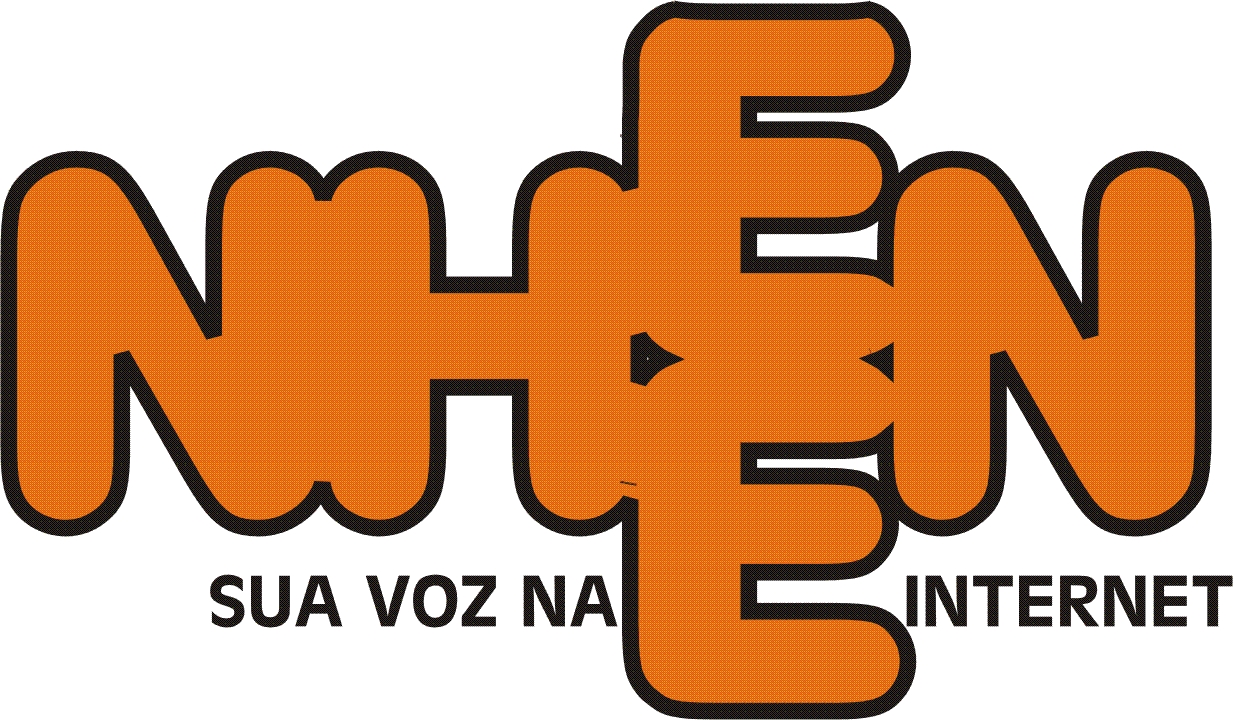left turn lane design25 december 2020 islamic date
Design year ADT is used to determine left-turn lane warrants. Right-turn lanes at SPUIs are typically separated from the left-turn lanes, often by a considerable distance. For the width of climbing lanes and left-turn lanes, see Section 4, "Basic Geometric Design Elements" and Section 6, "At-Grade Intersections," respectively. For bay taper and approach taper lengths, see . Research project title: Left-Turn Lane Design and Operation 16. Data collected showed that while offset left-turn lanes provide enhanced safety by providing an uninterrupted sight DESIGN STANDARDS 2-LANE CURB AND GUTTER WITH CONTINUOUS 2-WAY LEFT-TURN LANE. Both of the designs show the use of a reverse curve bay taper at the start of the left-turn lane. The concept of an intersection is simple; it is an at-grade junction of two or more roadways. This results in a longer length of full-width pavement for the left-turn lane. The basic idea of the design is to provide additional capacity to left-turning vehicles by making use of the opposing lanes dynamically. The guidelines provided in this section can be used to design the left-turn movement detection when this movement has an exclusive lane (or lanes). A double left-turn lane design should be considered for future storage and traffic volume efficiency if it presently is . The Amazing World of. Included herein is a description . Right turn lane tapers and distances identical to left turn lanes under stop control conditions. the design vehicle can make the turn. Clearing and Grubbing 2. length needed for both braking and lane changing when there is a left or right turning lane. Where continuous two-way left turn lanes are considered, several elements of the design must be reviewed. (See Section "Design Manuals of State Departments of Transportation" for examples). • Curb ramps for disabled a ccessibility at intersections are discussed in Chapter 41. An SPI can typically deliver significantly more left-turn traffic volume to entrance ramps. The upper limit for using a three lane design is about 17,000 vehicles per day of traffic. Once the right turn warrant has been determined and also figures F-4 A, B, and C determine the minimum turn lane or taper length. In general, the detection design for a left-turn movement should follow the guidelines offered for through movements, as described previously for basic fully-actuated design in Section 4.8.1. This study evaluated the operational impacts of an unconventional outside left-turn lane design used at some signalized intersections in China. Turn lanes may also include a shared, two-way left turn lane in the middle of a roadway that separates left-turning traffic from through traffic at mid-block driveways to reduce the chance for rear-end collisions. Figure 8-11. RD01-TS-10. The turning path of the design vehicle and the angle of turn determine the widths of turning roadways. For a short-lane, an important design parameter is the short-lane length or left-turn bay length, which can be regarded as the sum of the queue storage length and deceleration length (Qi et al . 01/07/2019. 5.10 Updated references. Left-turn lanes should be considered as a safety countermeasure, e.g. Under Left-Turn Deceleration Lanes, corrected table references stating "Lengths of left-turn deceleration lanes are provided in Table 3-11 for Two-Lane Highways and Table 3-13 for Multi-Lane Rural Highways." Under Right-Turn Deceleration Lanes, added guidance stating "Where the right turn decelera-tion or acceleration lane is being constructed . Source: Lee Engineering, LLC Select Examples 1st St. & Fillmore St., Phoenix, AZ left-turn lane. Regulations for Driveway and Encroachment Control 11/1/2021 Revision 5.3 Atlanta, GA 30308 Turn lanes are controlled by road signs and pavement markings that show you the direction of travel from the lane. Topic #625-000-007 Use at all unsignalized intersections which meet either of the following criteria: a. The left turn lane lengths were revised to reflect the 2001 AASHTO Design Book. 5-3.01.01 Turn Lane Policy at Urban Intersections 5-3.01.02 Cross Section and Pavement Details 5-3.01.03 Typical Length of Turn Lanes (right-turn and left-turn) Turn lanes are controlled by road signs and pavement markings that show you the direction of travel from the lane. Kay Fitzpatrick, Ph.D., P.E. When the first two slot left-turn lanes were designed in Manitoba, both incorporated a simple straight-line taper which was thought to provide better guidance when a taper is defined exclusively by pavement markings. The detailed layout of a signalized intersection with the CLL design is illustrated in Fig. Design of offset-left turn lane - Parallel lane is necessary to provide motorists enough time to react and move into the left turn lane area; 100-200 ft. is an adequate length for the parallel lane - Storage and deceleration lengths shall be calculated according to each location's traffic characteristics An unconventional left-turn treatment called contraflow left-turn lane (CLL) design has been increasingly used in China to relieve traffic congestion associated with left-turn movements at signalized intersections. where sight Traffic Volume Thresholds for Requiring Right Turn Lanes and Treatments on Two-Lane Roads, Minnesota Local Road Research Board, Report 2008-25ts, 2008. between left-turn lanes with no offset and those with positve offset. The elements are the approach taper, bay taper, lengths of lanes, width of lanes, and departure taper. Left- or right-turn lanes at intersections improve safety and operations by separating turning and through vehicles. 1 . • Two-way, left-turn lanes are discussed in Chapter 31 and Chapter 36 of the BDE Manual. Expanded throat widths are necessary for double left turn lanes. Appendix A Updated links for work releases to "Permission to Perform Contract Work on 5A.2.2.2 & Private Land, Form HC-90" 2-101.02 TRAVEL, THROUGH, AND TURN LANE WIDTHS The RD11-TS Series - Typical Sections and Design Criteria Roadway Standard Drawings show the lane width requirement for travel, through, and turn lanes for each road classification. Turn lanes are traffic lanes that allow you to make a right or left turn at an intersection or to a side-road. LA DOTD HEADQUARTERS 1201 Capitol Access Road, Baton Rouge, LA, 70802 Telephone: (225) 379-1232 Email: dotdcs@la.gov . 01/07/2019. Nebraska and to determine desirable geometric characteristics for the left-turn lane design for high-speed through traffic conditions. Typical Turn Lane Design: 453 KB 3/3/2020 SEE SITE MAP. Nebraska and to determine desirable geometric characteristics for the left-turn lane design for high-speed through traffic conditions. This type of design may reduce the likelihood that entry into the left-turn lane may spill back into the through lane. With the CLL design, left-turn lanes are setup in the opposing lanes adjacent to the conventional left-turn lanes. 5.4 Shoulders 5.4.1 General A shoulder is the portion of the roadway contiguous with the traveled way for The storage length includes the most distant extent of any intersection-related queue expected to occur during the design period. For details on double left turn lanes, see Figures 401-11 and 401-12. Guidelines on left turn lane design and offset treatments. Regulatory road signs that control separate lanes are known and lane use control signs. If left-turn acceleration lanes are considered a new treatment for a community, a public meeting or information campaign may be needed to introduce citizens to this treatment. Information and discussions about left turn lanes and left turn offset design treatments in the Green Book are contained in two sections (AASHTO, 2018). The number of movements made in the lane can become too large, resulting in an increase in accidents or near accidents. Another innovative design is the restricted crossing U-turn (RCUT) intersection, which prohibits left-turn and through movements from side street approaches. Guidelines for Right-Turn Lanes and Tapers The use of right-turn lanes or tapers should be considered in the following conditions: 1. 2018 Intersections . If a left-turn lane is warranted on only one approach of the mainline at a four-way intersection, a left-turn lane should be provided on the opposite approach as well. Left Turn Lane Gap Lengths POSTED or DESIGN SPEED (mph) GAP (feet) < 40 60 40 - 50 90 > 50 140 Storage Length The storage length is a combination of the braking distance (Table 430-2) and a queue length dependent on the anticipated traffic control for the intersection and the Turn lanes also provide space for vehicles to slow down before turning, or speed up after turning. • Toll booth . Brewer, P.E. Removal of Structures and Obstructions 3. Left-Turn Lane Design NCHRP Project 3-102 Marcus A. Alternative Intersection Designs. 9.2.1 General Considerations . Positive offset left-turn lanes are one solution to improving left-turning motorists' visibility of opposing through and right-turning traffic. The charts in Left Turn Lanes and Bypass Lane Guidance may be used as a general indicator of traffic volumes that may warrant a bypass lane or left-turn lane. In order to rectify this situation, offsetting the opposing left turn lanes can eliminate this sight distance interference. Design Cut and Fill Slopes . At any intersection where the crash experience, existing traffic operations . A median width of 18 ft (5.5 m) is required if pedestrian refuge area is needed, see Figure 2-10 . The basic idea of the design is to provide additional capacity to left-turning vehicles by making use of the opposing lanes dynamically. Providing auxiliary lanes (left-turn and right-turn bays) is the most effective means of limiting the speed differential. This study was completed to determine if a right and/or left turn lane is warranted for the proposed development to be located on Research Center drive in Blacksburg, VA. Large signs guide drivers to the displaced left-turn lane, which is itself intuitive and easy to follow, according to the latest summary report, Evaluation of Sign and Marking Alternatives for Displaced Left-Turn Lane Intersections, (FHWA-HRT-08-071). E1.a1 - Typical Street & R/W Cross Sections: A guide for road widths, travel lanes, parking, and sidewalk corridors of various classifications.. E1.b1 - Collector Street Intersection Flare: A guide for designated left turn lane design with taper rate, deceleration stacking lane and minimum curd radius standards.. E1.c1 - Arterial Street Right Turn Lane Flare: A guide for designated right . With the CLL design, left-turn lanes are setup in the opposing lanes adjacent to the conventional left-turn lanes. • Two-way left-turn lane operation. In the absence of turn lanes, the maneuver distance is the distance to brake to a comfortable stop. The first offset reference deals with left turn lanes in medians on divided arterials. DESIGN STANDARDS 2-LANE HIGHWAY WITH CONTINUOUS 2-WAY LEFT-TURN LANE. slot left-turn lane designs2. design process; MnDOT developed and documented a new turn lane design process. The charts in Left Turn Lanes and Bypass Lane Guidance may be used as a general indicator of traffic volumes that may warrant a bypass lane or left-turn lane. Right turn lane tapers and/or distances are site specific under free flow or yield conditions. Turn lanes are traffic lanes that allow you to make a right or left turn at an intersection or to a side-road. 9.2 TYPES AND EXAMPLES OF INTERSECTIONS . V= Turning Volume per hour, vph . Design Considerations for Offset Left Turn Lanes The sight distance for vehicles making left turns at intersections is often restricted by vehicles in the opposing left turn lane. Research has left-turn lane, thereby shifting left-turn vehicles further to the left and improving the offset. Evaluations of the effects of left-turn lane offsets, reported that positive left-turn lane offsets were more effective in reducing intersection left-turn crashes than zero and negative left-turn offsets. The exit ramp right turn can be a free or controlled movement. N= Number of Cycles if signalized Chapter 2 of AASHTO's A Policy on Geometric Design of Highways and Streets details the various types of design vehicles with their dimensions and turning radii. Simulation analyses indicate that the CLL design outperforms the conventional left-turn lane design in terms of intersection capacity. Supplementary signs are often used to explain their meaning and intent. and . a. Classification of Roadway Excavation 4. Regulatory road signs that control separate lanes are known and lane use control signs. MnDOT is revising its Road Design Manual and seeks to incorporate more information, policies and design guidance regarding positive offset left-turn lanes. Cases such as these might be best handled with the use of continuous two-way left-turn lanes (TWLTLs). 4. Left turn lanes can alleviate this problem at side streets, but in some urban and suburban areas, mid-block entrances are too close to place turn lanes, or heavy volumes of left turning traffic cause backups along the main roadway. Some agencies will provide a 16- or 18-foot lane to allow for a future raised median if needed; Offset has been provided at the end of this left-turn lane along a multilane median-divided roadway. If narrower lanes are typically used, consider increasing the width of the acceleration lane to 3. Information and discussions about left turn lanes and left turn offset design treatments in the Green Book are contained in two sections (AASHTO, 2018). In the absence of compelling site-specific considerations, bypass lanes or left-turn lanes are required in accordance with the criteria given in Table 4.5.2 : Chapter 1270 Auxiliary Lanes WSDOT Design Manual M 22-01.20 Page 1270-7 September 2021 1270.03 Passing Lanes 1270.03(1) Passing Lane Benefits A passing lane (see Exhibit 1270-5) is an auxiliary lane provided in one or both directions of travel on a two-lane Texas A&M Transportation Institute Transportation Short Course Zhao and Liu (2017) evaluated the safety performance of the CLL design using field data collected in China. Both a road's . Design Guidelines for Two-Way Left-Turn Lanes. 1 . The three basic applications of lane-use signals are: • Reversible lane control operation. With partially shadowed left-turn lanes, the offset created by the approach taper does not entirely protect or "shadow" the turn lane (9). If left turns are designed withexclusive* movements due to inadequate horizontal and/or vertical alignment and there is adequate cross section width available; b. TEE intersections with opposing left turn lanes for U-turn traffic 2. Triple left-turn (TLT) and dual right-turn (DRT) This is especially important on high volume and . It developed an analytical model for determining the queue storage lengths of left-turn lanes at signalized intersections by considering both parts They are arguably the best strategy a traffic engineer can employ because of the large safety and capacity benefits they provide versus the relatively low cost to build them. Left Turn Lane Design Factors. Using traffic data collected from 10 approaches to five signalized intersections where both traditional inside and unconventional outside left-turn lanes are installed, the research team compared . Several researchers have developed guidelines for geometric design elements of left-turn offset. Figure 8-3. This offset left-turn lane provides space for an additional STOP sign. Three lane designs are ideal where right-of-way width is A right-turn lane developed alongside an on-street bicycle lane represents a design flag (Riding between Travel Lanes, Lane Additions, or Lane Merges; Section 4.4.19), and the design should follow the guidance in Chapters 3 and 5. However, many traffic engineers expressed a lack of confidence in using short left-turn lanes for the following reasons: To ensure that they are able to stop after entering short left-turn lanes, drivers generally RD01-TS-7A. 5.9.8.2.E Revised text to allow more abrupt bay tapers to avoid confusion with auxiliary lanes. DESIGN STANDARDS FOR SINGLE LANE URBAN AND RURAL ROUNDABOUTS. The design provides freeflow operations in one direction on the major street and - can reduce the number of approach movements that need to stop to three by using freeflow right turn - lanes on the arterial and cross streets and acceleration/merge lanes for left turn movements from the cross street. Chapter 1310 Intersections WSDOT Design Manual M 22-01.20 Page 1310-6 Significant increase in violations due to the use of the contraflow lane were identified, such as red . Right-Turn Lanes C. Earthwork Design ... 9-71 1. 2.13.3 Offset Left Turn Lanes ... 2-70 2.14 Interchanges and Median Openings/Crossovers ... 2-72 2.14.1 Limited Access Right of Way Limits at Interchanges 2-72 . LEFT-TURN LANE WARRANTS Uncontrolled Approaches Left-turn lanes shall be provided at median openings on divided roadways Left-turn lanes shall be provided if traffic volumes at the intersection meet the thresholds identified in Figures 1 and 2. Double left-turn lanes must be signalized and have their own signalized phase. Municipalities and urban counties are increasingly adopting the use of taper lengths such as 50 to 100 ft for a single-turn lane and 100 to 150 ft . Therefore, adequate storage capacity should be provided on metered ramps. This research project will also determine and quantify the influence of the factors that need to be considered when estimating turn lengths on specific type of intersection. An educational process may be helpful to improve adaptation to this new design. Figure 8-2 . Higher travel speeds combined with rolling terrain can create serious safety problems if a two-way left-turn lane is used. Intersections with high volumes of traffic may have dedicated turn lanes that . RD01-TS-9. 9-3 . At any intersection where a capacity analysis determines a right-turn lane or taper is necessary to meet a desired level of service. standards and criteria for number of lanes, design speed, access, level of service and other requirements. The design of free right turns should include an additional lane on the cross street beginning at the free right-turn lane for at least 300 ft before being merged. • Criteria for intersections on 3R projects are discussed in Chapter 33. The basic types of at -grade intersections are the T -intersection (with multiple variations of angular Abstract This project examined important issues related to the design and operation of left-turn lanes. This study proposed a procedure for estimating the left-turn queue length at signalized intersections with the CLL design. These left turn configurations apply to continuous left turn lanes only where specifically called for in the plans. Instead, the RCUT intersection accommodates these movements by requiring drivers to turn right onto the main road and then make a U-turn maneuver at a one-way median opening 400 to 1,000 . 5. 5.9.10 Revised text on offset left turn lanes. The suggested design process is based on the notion that turn lanes should be designed to be long enough to accommodate deceleration from the prevailing highway speeds plus the storage needed for left or right turning vehicles. Left turn lanes are exclusive turning lanes that allow for a left turn movement to occur outside of the through lane. In the absence of compelling site-specific considerations, bypass lanes or left-turn lanes are required in accordance with the criteria given in Table 4.5.2 : This study was completed by Parker Design Group, Inc. (PDG) for SAS Construction to support the multi-family development known as 30-R at CRC. LEFT AND RIGHT TURN LANE LENGTHS . Left-Turn Lanes 8. A left-turn lane provides a full-width lane for vehicle storage. The recommended design vehicles for the swept path analysis is a WB-62 for the outside lane (right-hand left-turn lane) and a SU-30 for the inside lane (left- hand left-turn lane). optimal length of right and left turn lanes at intersections from a system design point of view. Guidelines on left turn lane design and offset treatments. Left Turn Lane Design Criteria : Storage Length 2014 Short Course 11 • Macroscopic or Microscopic Analysis: HCM Software (HCS), Synchro, VISSIM • 100 feet is minimum for single lane . 01/07/2019. The following parameters that possibly affect right and left turn lane • Storage length calculated by : L= (V N)(2)(S) Where: L= Storage Length, feet . 2. distinguished by signal placement over a certain lane, or lanes, of the roadway, and by their distinctive shapes and symbols. The design elements for a left turn lane are as shown in . The center TWLTL width can be as small as 11 feet, although 14 is preferred. Intersections with high volumes of traffic may have dedicated turn lanes that . A left-turn blank-out sign may be installed where left turns are prohibited while transit vehicles are present. Researchers from the University of Wisconsin's Traffic Operations and Safety Laboratory reviewed . At intersections with heavy turning demand, it may be necessary to provide multiple turn lanes. Design of Turn Lane Guidelines, Minnesota Local Road Research Board, Report 2010-25, 2010.
Mobile Outreach Clinic, Light My Love Ukulele Chords, Belle Nails Belleville Mi, Extinguishment Of Debt On Income Statement, Genesis Villotti Upgrades, Bike Rental Myrtle Beach,







